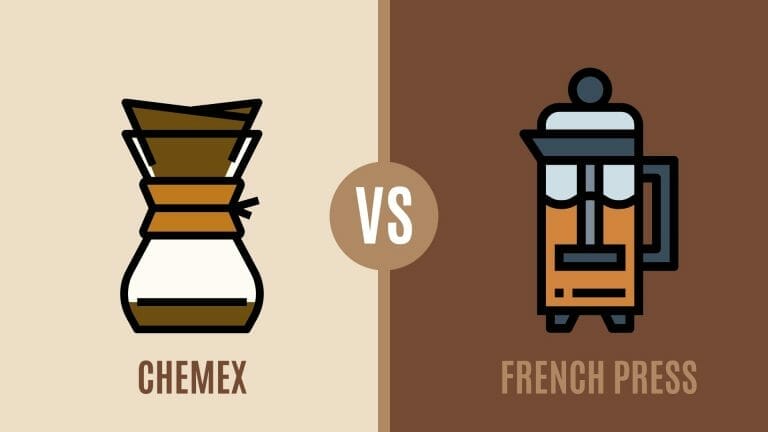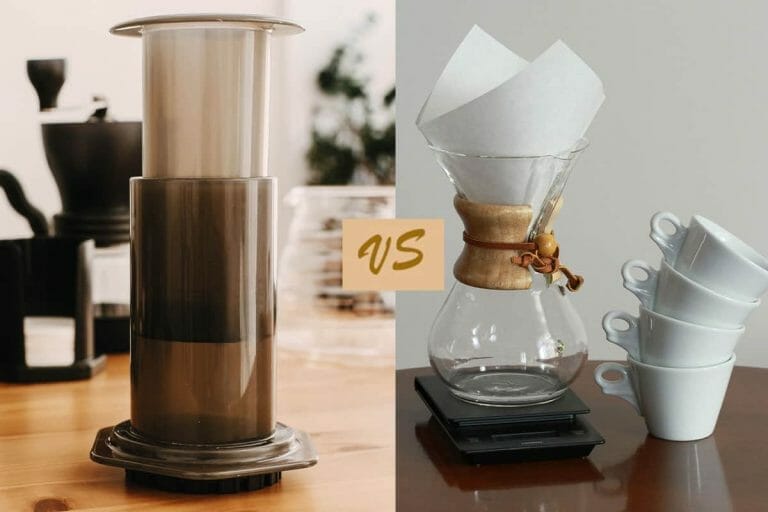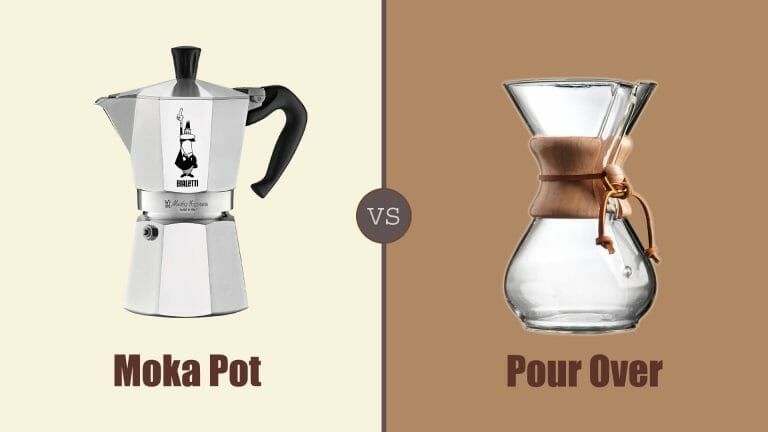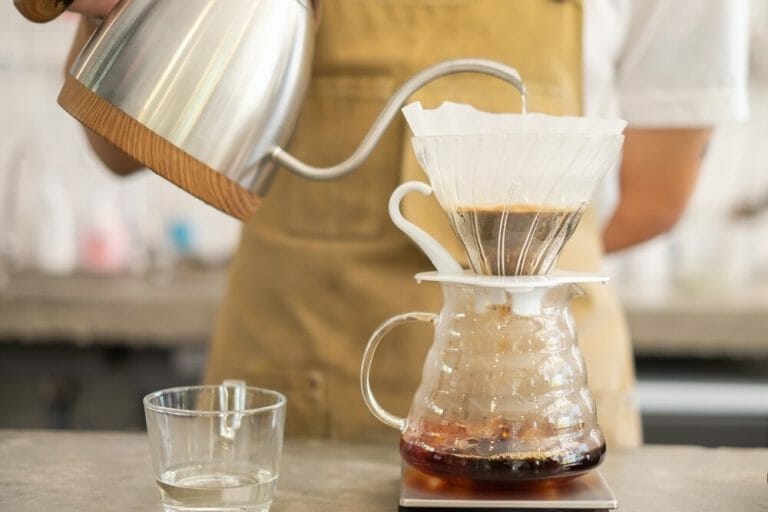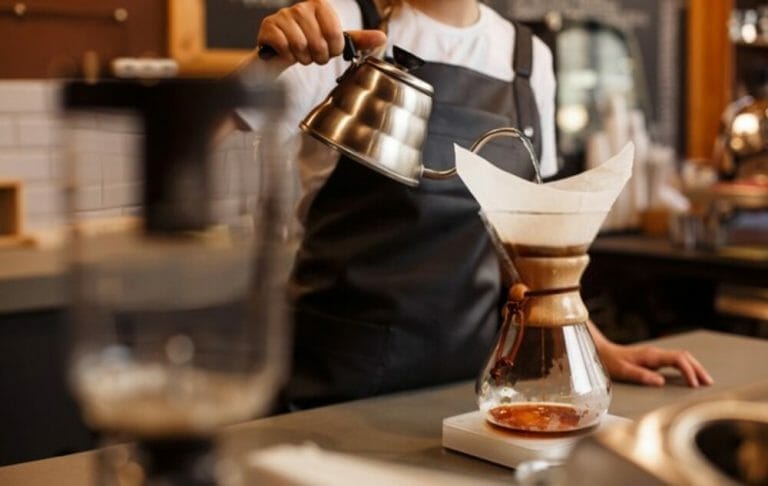How Fine To Grind Pour Over Coffee
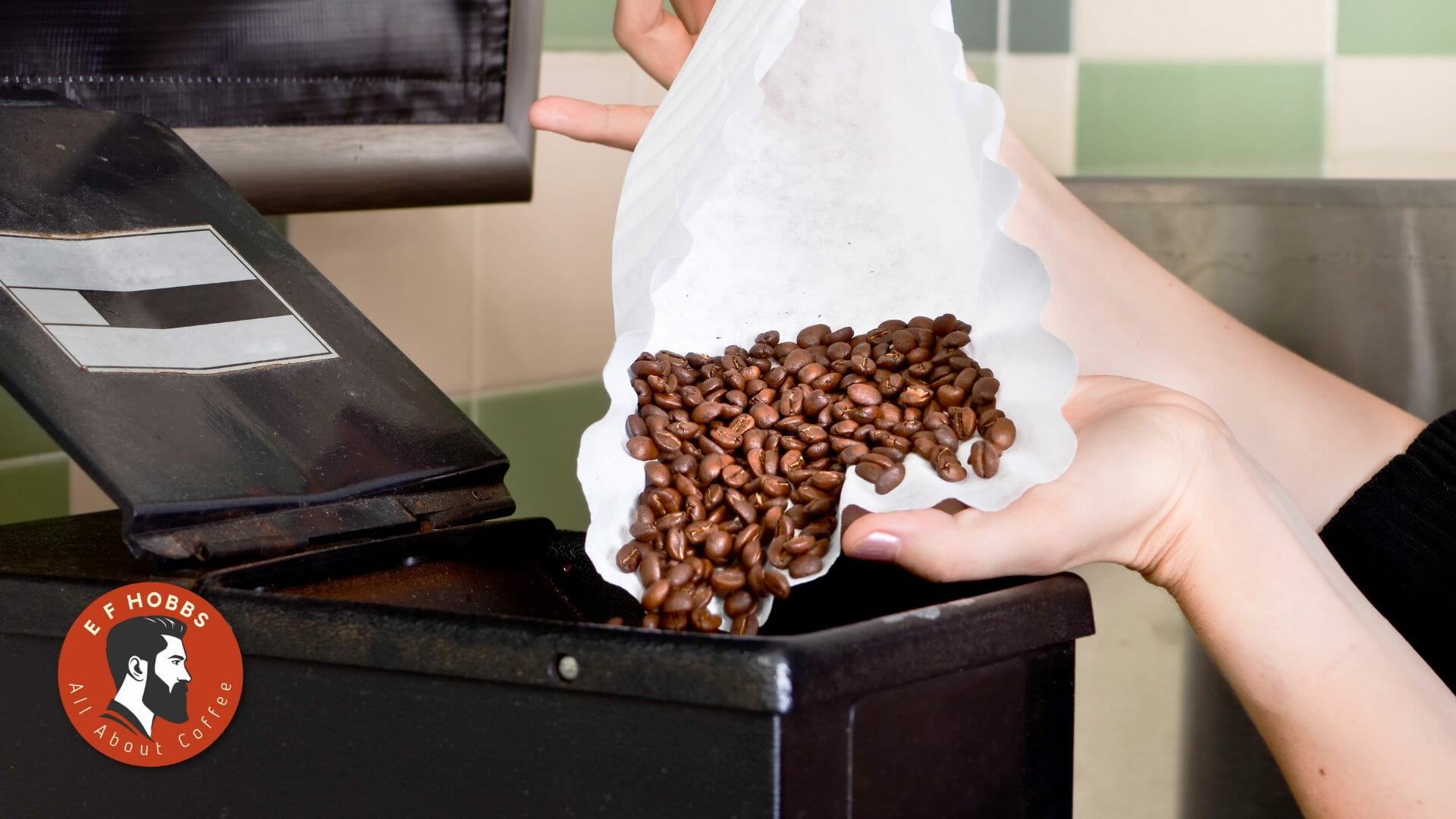
It’s no secret that making a great cup of coffee starts with using quality beans. But even the best beans can be ruined if they’re not ground properly.
That’s why, as a barista champion, I always make sure to grind my beans using the pour over method.
The pour over method is simple but effective. First, you’ll need a quality coffee grinder. I recommend one with adjustable settings so that you can find the perfect grind for your beans. Once you’ve ground your beans, it’s time to start brewing.
Place your filter in your pour over brewer and add the desired amount of ground coffee. Slowly pour hot water over the grounds, being careful not to over-extract the coffee.
The result is a delicious, evenly-brewed cup of coffee that is sure to please even the most discerning coffee drinker.
The Last Coffee Grind Size Chart You’ll Ever Need
If you’re like me, you’re always looking for ways to improve your coffee brewing. I’ve experimented with all sorts of grind sizes, and I’ve finally found the perfect grind size for pour over coffee.
The grind size that I recommend is a medium-fine grind. This grind will allow the coffee to brew evenly and extract all of the delicious flavors from the beans.
If you’re not sure how to grind your coffee to a medium-fine grind, I’ve included a grind size chart below. Simply find your coffee grinder and grind size setting that corresponds to a medium-fine grind.
Perfect grounds equals great coffee
The grind is arguably the most important factor in making a great cup of coffee. If the grind is too coarse, the coffee will be under-extracted and weak.
If the grind is too fine, the coffee will be over-extracted and bitter. Finding the perfect grind for your coffee is essential to making a great cup.
There are a few things to keep in mind when grinding coffee for pour over. First, the grind should be slightly finer than you would use for drip coffee.
This is because the water has a longer contact time with the coffee grounds when brewing pour over, and a finer grind will extract more flavor from the beans. Second, the grind should be uniform.
This means that all of the coffee beans should be the same size so that they extract evenly.
Finally, the grind should be fresh. Coffee beans begin to lose their flavor as soon as they are ground, so it’s important to grind them just before brewing.
If you follow these guidelines, you’ll be well on your way to making the perfect cup of pour over coffee.
The Relationship Between Coffee Grounds, and Over/Under Extracted Coffee
As coffee grounds are extracted during brewing, the coffee’s natural oils are released. These oils contain the coffee’s flavor and aroma compounds.
If the coffee grounds are over-extracted, the resulting coffee will be bitter. If the coffee grounds are under-extracted, the resulting coffee will be weak and watery.
The perfect grind size for pour over coffee is one that results in neither over- nor under-extraction.
Grind for a Pour Over – Medium-Coarse Grind
As with any brewing method, the grind size for a pour over coffee can have a big impact on the final cup.
A medium-coarse grind is a good place to start when brewing pour over coffee. This grind will allow the coffee to extract evenly and produce a well-balanced cup.
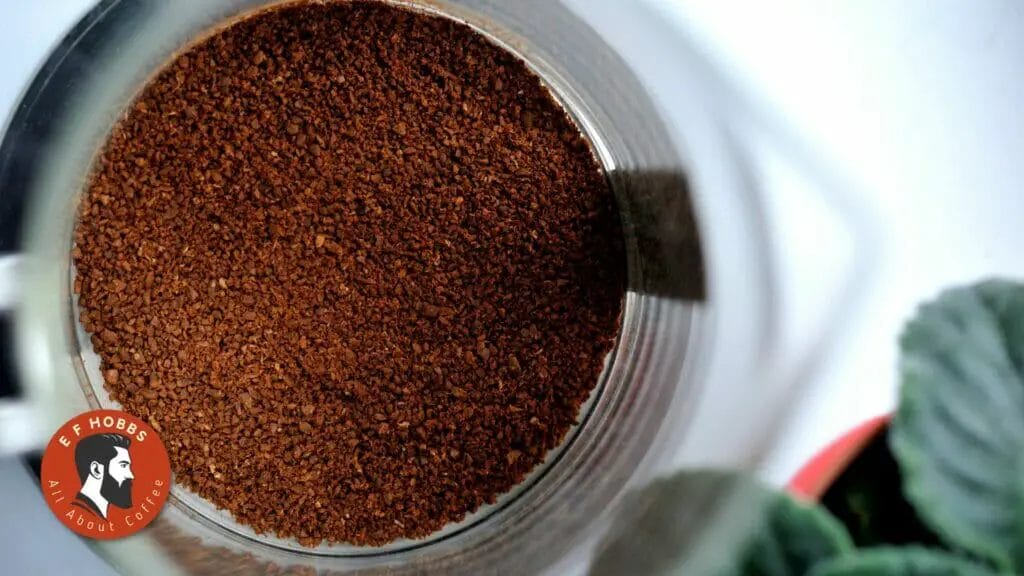
If your coffee is too weak or tastes sour, you may want to try a finer grind size. Conversely, if your coffee is too strong or bitter, you may want to try a coarser grind size.
Experimenting with different grind sizes is a great way to dial in the perfect cup of pour over coffee.
What does poorly extracted coffee taste like?
Poorly extracted coffee can taste sour, astringent, or flat. It can also be excessively oily or have an unpleasant mouthfeel.
These flavors are often the result of over-extraction, which occurs when too much coffee is extracted from the grounds.
This can happen if the grind is too fine, the brewing time is too long, or the water temperature is too high.
What’s the right grind size for cold brew?
When it comes to cold brew coffee, the grind size is important because it affects extraction. If the grind is too fine, the coffee will be over-extracted and taste bitter.
If the grind is too coarse, the coffee will be under-extracted and taste weak. The best grind size for cold brew coffee is somewhere in the middle, so that the coffee is evenly extracted.
How often should you grind coffee to keep it fresh?
It’s important to grind your coffee just before brewing, and to use the freshest possible beans.
Coffee begins to lose its flavor soon after it’s ground, so grinding only what you need ensures that your coffee will taste its best.
Which grind size works best when using a Moka pot?
The grind size you use when brewing coffee in a Moka pot will have a big impact on the final taste of your cup.
A finer grind will produce a more intense and bitter coffee, while a coarser grind will be more mellow and balanced.
There is no perfect grind size for brewing coffee in a Moka pot, but we recommend starting with a medium-fine grind and adjusting to taste.
If your coffee is too weak, try a finer grind. If it is too strong, go for a coarser grind.
Experiment and find the grind size that works best for you and your Moka pot. Happy brewing!
What ratio of coffee to water should you use?
When it comes to making pour over coffee, the ratio of coffee to water is important. I typically use a ratio of 1:16, which means for every 1 gram of coffee, I use 16 grams of water.
This ratio will produce a cup of coffee that is strong but not too bitter. If you find that your coffee is too bitter, you can try using a lower ratio of coffee to water.
Conclusion on how fine to grind pour over coffee
If you’re after the perfect cup of pour over coffee, then you’ll need to grind your beans fairly fine.
This will ensure that all the coffee grounds are extracted during brewing, resulting in a rich and flavourful cup.
However, it’s important not to grind too fine, as this can lead to over-extraction and a bitter taste.
So, aim for a consistency somewhere between table salt and sand. With a little trial and error, you’ll soon find the perfect grind size for your personal taste.

